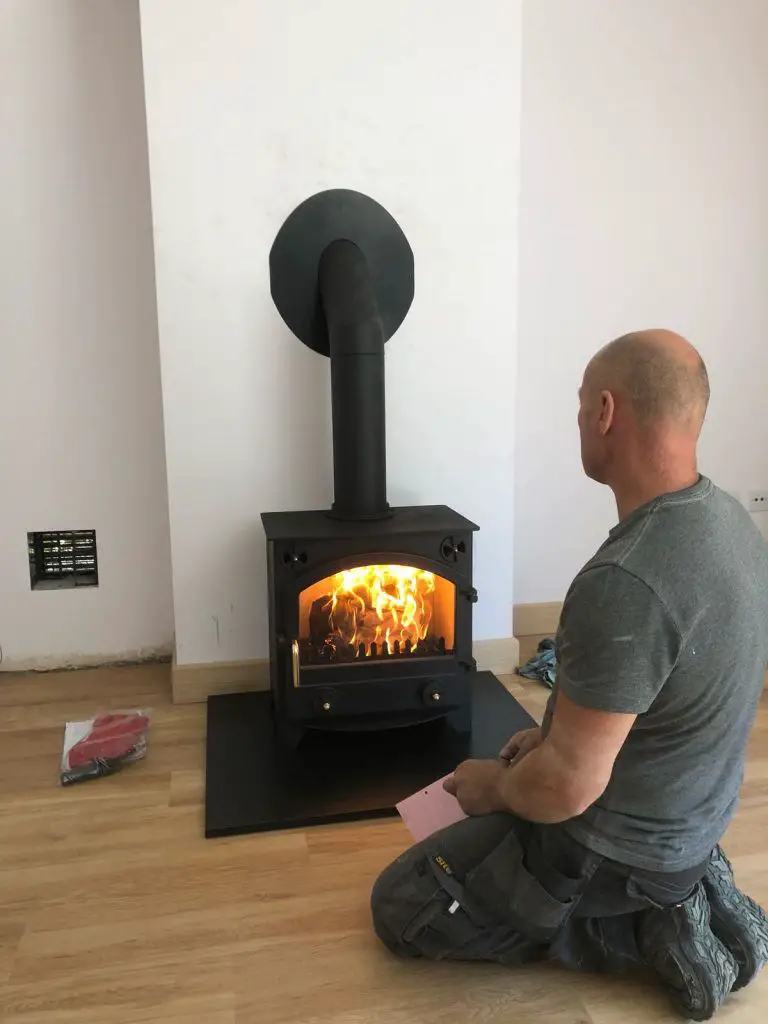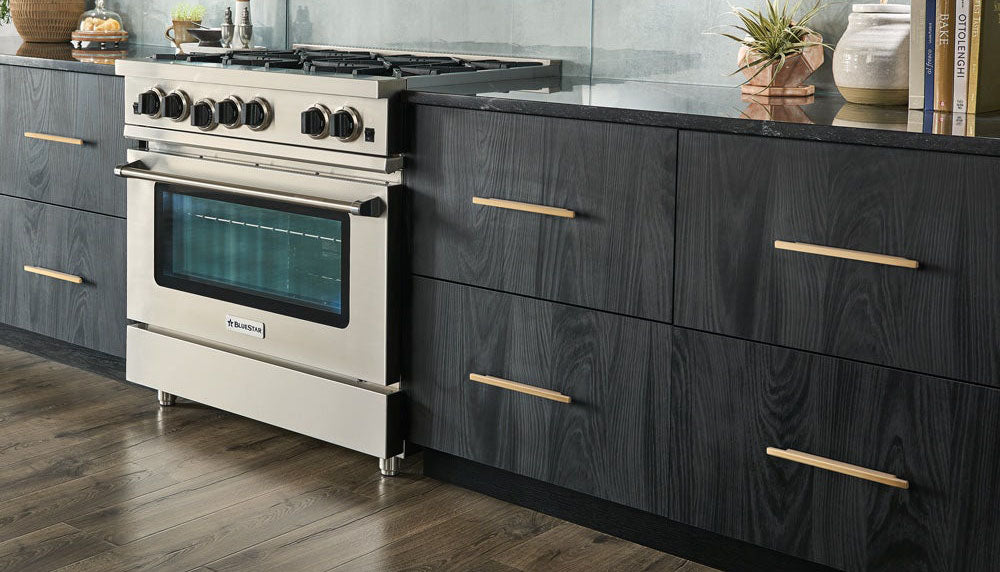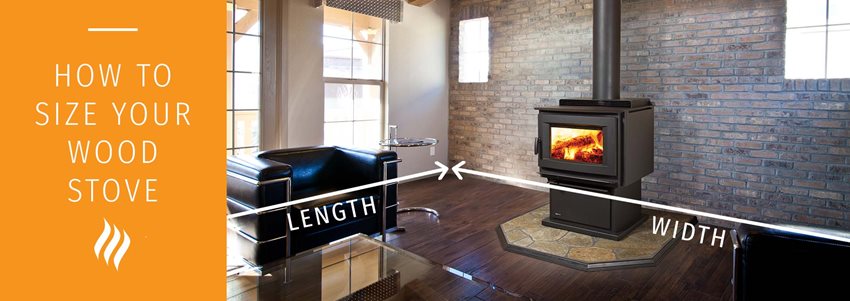To determine the size of wood stove you need, calculate the room’s cubic meterage and consider the stove’s output size. Oversizing can lead to overheating and inefficient combustion, so it’s crucial to choose the right size stove.
Factors like room layout, insulation, and desired heating area should also be taken into account. Selecting a wood stove that matches your space’s requirements will ensure optimal heating efficiency and reduce environmental impact. Properly sizing your wood stove will provide you with a cozy and comfortable living space while maintaining eco-friendliness.
Consult with professionals or online resources for guidance on selecting the appropriate wood stove size for your specific needs.


Credit: sandiegohardware.com
Determining The Right Wood Stove Size
Calculating Room Cubic Meterage
Measure the length, width, and height of your room. Multiply these dimensions to get the cubic meterage for accurate sizing.
Considering Room Layout And Placement
Place the wood stove at the center of the room for optimal heat distribution. Consider airflow and safety when determining the placement.

Credit: www.regency-fire.com
Factors Affecting Wood Stove Sizing
Choosing the right wood stove size depends on the cubic meterage of the room and the desired output. Factors such as combustion systems and room layouts also play a crucial role in determining the appropriate wood stove size for your space.
Maintenance and wood storage also influence the sizing process.
Efficiency Of The Stove
Types Of Combustion Systems
When determining the size of the wood stove you need, there are several key factors that come into play. Understanding the efficiency of the stove and the types of combustion systems available is crucial.
Efficiency Of The Stove
Wood stoves vary in their efficiency, which can affect the amount of heat generated and the size needed for your space. High-efficiency stoves can produce more heat with less wood, making them suitable for smaller areas.
Types Of Combustion Systems
- Traditional Combustion: Utilizes a single combustion process, ideal for moderate heating needs.
- Secondary Combustion: Enhances efficiency by burning wood gases, suitable for high heat output.
Choosing the right combustion system is essential for maximizing heat output and ensuring optimal performance of your wood stove.
Choosing The Correct Wood Stove Output Size
When it comes to choosing a wood stove for your home, one of the most critical factors to consider is the output size. The size of the wood stove you need depends on various factors, including the size of the space you want to heat and the climate of the area. Understanding the heating requirements and referencing stove sizing charts can help you select the right wood stove output size for your needs.
Understanding Heating Requirements
Before determining the size of the wood stove you need, it’s essential to understand your heating requirements. Factors such as the size of the room, the climate of your region, and the level of insulation in your home can influence the amount of heat needed to maintain a comfortable indoor temperature. Consider the square footage of the space you want to heat and any additional heating needs, such as heating multiple rooms or providing a primary source of heat. By understanding your heating requirements, you can more accurately assess the output size of the wood stove you need.
Referencing Stove Sizing Charts
One effective way to determine the correct wood stove output size for your space is to reference stove sizing charts provided by manufacturers or industry experts. These charts typically consider factors such as square footage, insulation levels, and climate zones to recommend the appropriate output size for a wood stove. By using these sizing charts as a guide, you can ensure that the wood stove you choose will provide sufficient heat for your specific heating needs.

Credit: www.wakefordfireplaces.com
Sizing For Different Room Sizes
Choosing the right sized wood stove for your room is essential for optimal heating efficiency. To help you make an informed decision, consider the size of your room and the heating needs. Whether you have a small room or a large room, we have got you covered. Read on to find out the considerations for each room size.
Small Room Considerations
In a small room, it is important to choose a wood stove that can effectively heat the space without overpowering it. A small wood stove is ideal for rooms with a limited area. It provides just the right amount of warmth without causing excessive heat. When selecting a wood stove for a small room, consider the following:
- The square footage of the room.
- The insulation in the room.
- The desired temperature you want to achieve.
- The efficiency of the wood stove.
By considering these factors, you can determine the appropriate size of the wood stove that will efficiently heat your small room.
Large Room Considerations
For a larger room, a wood stove with a higher heating capacity is required. It is essential to choose a wood stove that can effectively warm up a large space without overworking the appliance. When selecting a wood stove for a large room, take the following into account:
- The square footage of the room.
- The insulation in the room.
- The desired temperature you want to achieve.
- The heating capacity of the wood stove.
Considering these factors will help you find a wood stove that can efficiently heat your large room, providing comfortable warmth throughout the space.
Determining Your Wood Stove Maintenance Needs
When it comes to choosing the right wood stove for your home, it’s important to consider not only the size and heating capacity but also the maintenance requirements. Proper maintenance is crucial to ensure the longevity and efficiency of your wood stove. In this section, we will explore two key factors to consider when determining your wood stove maintenance needs: considering maintenance effort and evaluating long-term durability.
Considering Maintenance Effort
Maintaining a wood stove requires regular cleaning and inspection to ensure its optimal performance. The amount of effort needed for maintenance can vary depending on the design and features of the stove. To determine the maintenance effort required for a wood stove, consider the following factors:
- Accessibility: Is the stove easy to access for cleaning and inspection? A stove with removable panels or easily accessible components can significantly reduce maintenance effort.
- Ash Pan: Does the stove have an ash pan? An ash pan simplifies the process of removing ashes, making maintenance more convenient.
- Airwash System: Does the stove have an airwash system? An airwash system helps keep the glass clean by directing air over the surface, reducing the frequency of glass cleaning.
- Control System: Is the stove equipped with a sophisticated control system? Stoves with advanced controls can provide more efficient and cleaner combustion, reducing maintenance requirements.
Evaluating Long-term Durability
Investing in a wood stove with long-term durability is essential to avoid frequent repairs or replacements. To evaluate the long-term durability of a wood stove, consider the following factors:
- Material: What material is the stove made of? Cast iron stoves are known for their durability and can withstand high temperatures and heavy use.
- Welding: How are the stove components joined together? Welded seams are typically stronger and more durable compared to stove components that are bolted or screwed together.
- Construction: Is the stove well-built with solid construction? Look for stoves with sturdy frames and tight seals to ensure long-term durability.
- Brand Reputation: What is the reputation of the wood stove manufacturer? Research customer reviews and ratings to assess the overall quality and durability of their products.
Evaluating the maintenance effort and long-term durability of a wood stove is crucial in determining the right stove for your needs. By considering these factors, you can ensure that your wood stove requires minimal maintenance while providing reliable and efficient heat for years to come.
Frequently Asked Questions Of How Big Of A Wood Stove Do I Need
How Do I Know What Size Wood Stove To Buy?
To determine the right wood stove size, calculate room cubic meterage, consider efficiency and output size. Match stove size to room layout for optimal performance.
How Big A Wood Burning Stove Do I Need?
Determine wood stove size based on room cubic meterage to avoid overheating and insufficient combustion issues.
What Size Wood Stove For 1500 Square Feet?
For 1500 square feet, a medium wood stove is suitable for heating the space efficiently. It’s essential to match the stove size to the room dimensions for optimal heating.
Should You Oversize A Wood Stove?
Oversizing a wood stove is not recommended. Buying a stove that is too big for your space can make the area too hot and lead to insufficient combustion and increased pollution in the chimney. It is important to purchase the right size wood stove for your room.
Faq 1: What Factors Should I Consider When Determining The Size Of A Wood Stove?
To properly determine the size of a wood stove, you should consider factors such as the size of the room, the insulation, and the climate in your area.
Conclusion
When deciding on the size of a wood stove, it’s crucial to consider the room’s cubic meterage and layout. Oversizing can lead to overheating and inefficiency. It’s essential to select a wood stove that aligns with your heating needs without overpowering the space.
Consulting with a professional can help ensure the right fit for your home.